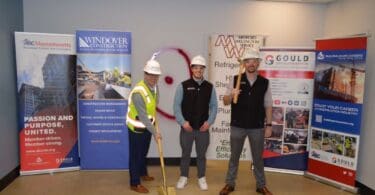by Paul Lukez
Switzerland is world-renowned for its watchmaking, banking, and pharmaceutical industries (think Rolex, UBS, and Novartis). So it is no accident that a culture valuing education, research, thrift, and precision has triumphed in these sectors.
The green industry is Switzerland’s next source of market innovation, having made significant strides in making the country’s design, construction, and development sectors greener — in both the sustainable and profitable senses of the word. What can we learn from the Swiss?
As a participant in a recent US-Switzerland delegation visiting Zürich, I witnessed firsthand the focus Swiss designers, builders, and developers were bringing to the green market. Buttressed by bold university-driven research initiatives (ETH Zurich, EFL Lausanne, etc.) executed in collaboration with well-funded government-subsidized research centers, the Swiss are the beneficiaries of new green technologies and concepts that save energy, resources, and money while improving an already high quality of life. Here are some of the green developments I observed:
EMPA
Imagine if Massachusetts (population 6 million) had its own fully funded sustainable research lab as Switzerland (population 8 million) has. EMPA, the federal institute for materials science research supported by corporate partnership, has an expansive campus of PhDs making cutting-edge discoveries. Especially visible is EMPA’s NEST project, a four-story concrete slab structure in which researchers can plug-in new apartment units and use each unit as a living lab for testing new technologies and concepts. When individual projects run their course, they yield to new units and research efforts. Occupancy by residents and staff 24×7 generates valuable scientific and market data in parallel. NEST’s innovative spirit is also evident in more modest research and development efforts initiated by architects and engineers. For instance, in a small town northeast of Zürich, architect Giuseppe Fend developed a new building envelope system called Lucido from local wood species and glass. This façade system can achieve remarkable r-values in excess of 150 (depending on the building’s orientation to the sun). Besides being super-green, it is a visually attractive application well suited for residential and commercial buildings. Lucido has been used in 100 Swiss projects so far and is scheduled to enter the U.S. market within one to two years. Nelson Solar holds the exclusive US patent and markets the product in the U.S. under its trade name SAF (Solar Activated Façade).
Designergy
Given Switzerland’s penchant for its intelligent use of resources and production methods, the country is focusing attention on hyper-efficient Building Integrated Photo Voltaic (BIPV ) products. An especially promising suite of products was developed by DESIGNERGY. This firm has created innovative roofing systems that seamlessly integrate solar panels, insulation and structural members and watertight roofs in an easy-to-install manner that saves installation time and costs. When applied to larger-size projects such as big-box and industrial developments, the scale of savings in manufacturing and installation is significant. In addition, the quality of roof and solar are ranked best in class. For example the system is 100% walkable, without preventing solar cells from generating microcracks. This product is also scheduled to come to the U.S. market in one to two years.
Redevelopment
The Swiss marketplace is actively adopting new technologies and concepts, driven in part by improved building standards and the search for market differentiation among developers. The 1 million sf SuurStoffi transit-oriented development project, located on the site of a former Oxygen Factory in the town of Zug, demonstrates how large-scale multiuse projects — particularly buildings from four to 10 stories high — can achieve zero-energy standards.
Zero-energy ratings were achieved through a state-of-the-art geothermal system with more than 230 boreholes going some 450 feet into the earth. PV systems supplement energy and power heat-pumps. This project demonstrates that zero-energy projects need not be limited in scale or building type.
Summary
A kind of synergy between Switzerland and Massachusetts exists: both are committed to education, technology, healthcare, and our strong financial institutions. Given Switzerland’s high cost of living, Massachusetts offers the Swiss a beachhead into the U.S. marketplace. This can create new manufacturing opportunities while opening up new venues for collaborative research and business ventures that protect the environment.
Paul Lukez, FAIA LEED AP, is the principal of Paul Lukez Architecture, an award-winning design firm in Somerville.










